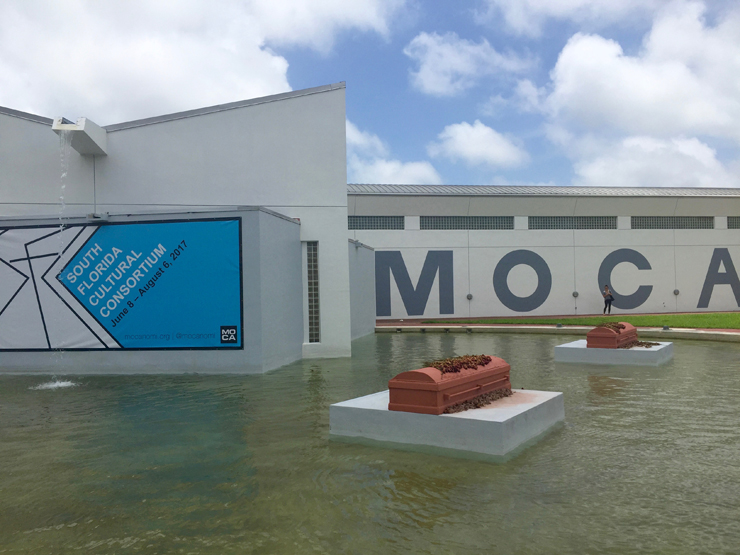
Anthony Amaya, Endless Spring/Summer 16.
The latest exhibition at the Museum of Contemporary Art (MOCA) North Miami just flows.
South Florida Cultural Consortium is a group exhibition of 25 artists from South Florida, spanning Key West to West Palm Beach. The participating artists won grants in 2014 and 2016 from the South Florida Cultural Consortium, which awards the largest government sponsored grants to artists in Broward, Miami-Dade, Monroe, Palm Beach and Martin counties.
Sharing a home, some of the most notable artists of the exhibit bring attention to issues affecting South Florida, the whole country and the world at large, such as rising sea levels due to climate change. These artists peer into an uncertain future through the lens of concerned locals, and use technology, color and visual language to present innovative works that hint at the tropical spirit of this troubled, millennial age.
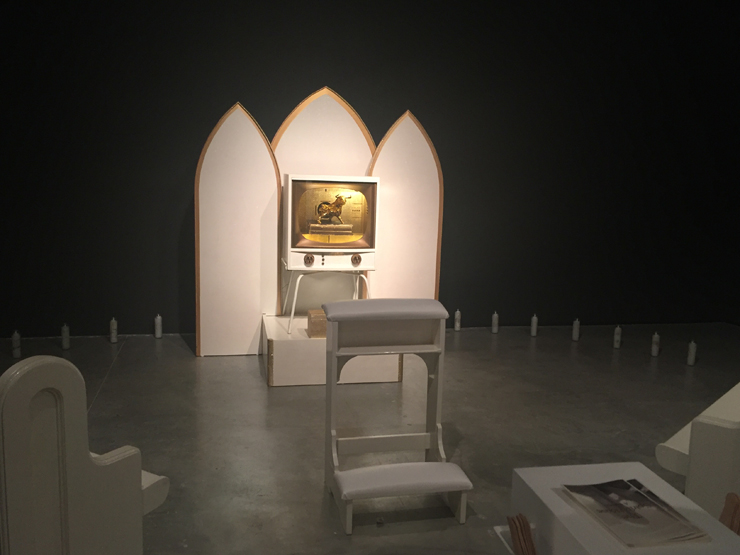
TD Gillispie, A Spirt House.
It is a challenge to get the work of different artists of varied genres who use eclectic media to form a cohesive, aesthetic whole. But, the curator Maria Elena Ortiz from Perez Art Museum (PAMM) successfully overcame the test of streaming through this diversity putting together a fluid and attractive show. The grand display includes photography, film, painting, sculpture and installations likened to street art, and the artists are as multi-cultural as the melting-pot they represent.
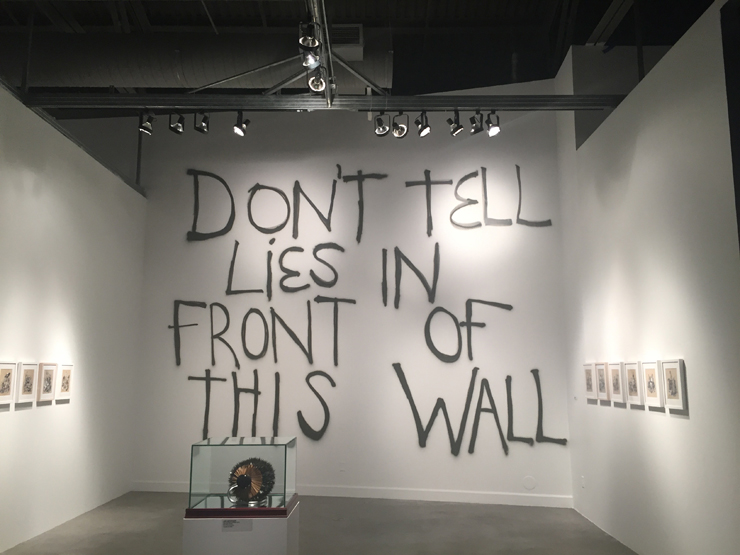
Jillian Mayer, Truther Mural.
As Ortiz explained, some of the artists created a new oeuvre for the exhibit, while others presented works they already owned. They were given the option. There was not one theme they needed to follow as in other large scale shows. Yet, the exhibition flows from start to finish just like the fountain at the entrance of the museum where the first piece lies.
Anthony Anaya installed Endless Spring/Summer 16 at the MOCA's fountain especially for this exhibition. Ortiz mentioned that Anaya said he knew exactly what he wanted to do for the show. He was haunted by the images of floating coffins that he saw on television during the aftermath of Hurricane Katrina. He thinks that the same tragedy can happen here because of the effects of global warming. Some areas of South Florida like Miami Beach are already experiencing flooding, and scientists have predicted that by 2050 sea level rise will have inundated many areas of coastal land. Two coffins covered in roses and spray painted in a terra cotta red lie over the water in the haunting piece.
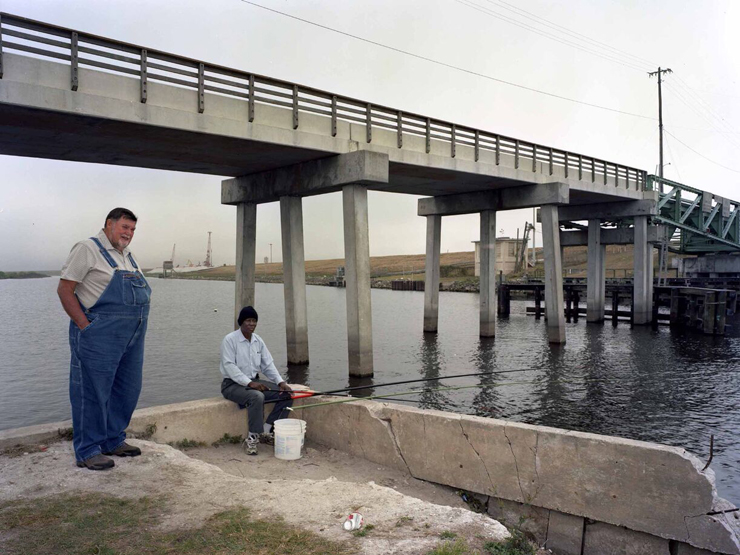
Richard LaBarbera, Lake Okeechobee, 2010.
In the first exhibition room, Jillian Mayer makes a statement about the honesty of good art, which ties in well with the other pieces about deception and denial. Walking through a museum can be a spiritual experience, similar to the experience of being in a church. One may be silent and meditative. "Don't Tell Lies in Front of This Wall" reads her wall length Truther Mural, which she painted using spray enamel in black.
A door leads into another smaller room housing A Spirit House, an interactive installation of a small white and gold chapel by artist TD Gillispie. In the middle of the chapel, there is an altar with a TV in the center that has a figurine of a bull inside. There are white pews lining the room and candles around it. Some of the candles have images drawn on them of guns and other objects of "worship" by Americans that symbolize the violence in mainstream culture.
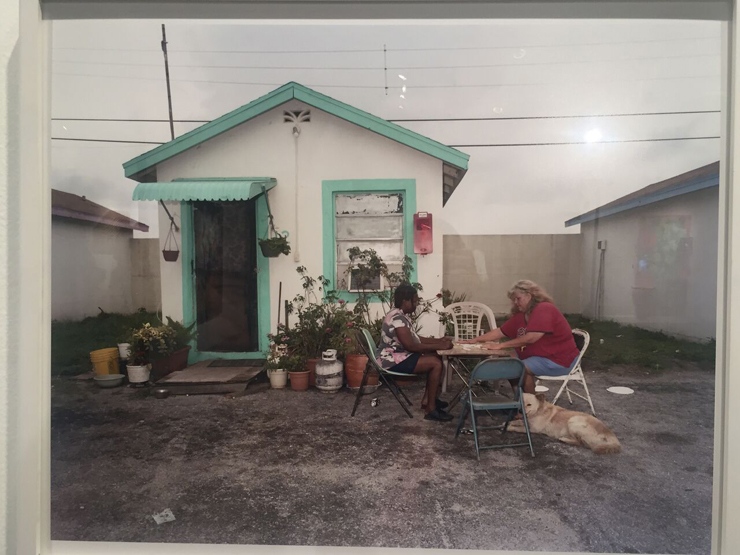
Richard LaBarbera, Brenda and Kathy Playing Dominoes, Lake Okeechobee.
At the entrance, there is something that resembles a donation box at a church with surveys. "We all worship something: Name your 'god,'" suggests the artist. The artists asks visitors a series of questions including "What or whom do you worship?""How did you come to worship your god?" and "Why do you believe as you do?" She then asks them to place the survey on the altar. The piece summons exhibition guests to consider what they revere in the context of the consumer driven altar of television that takes a central spot in their nuclear homes.
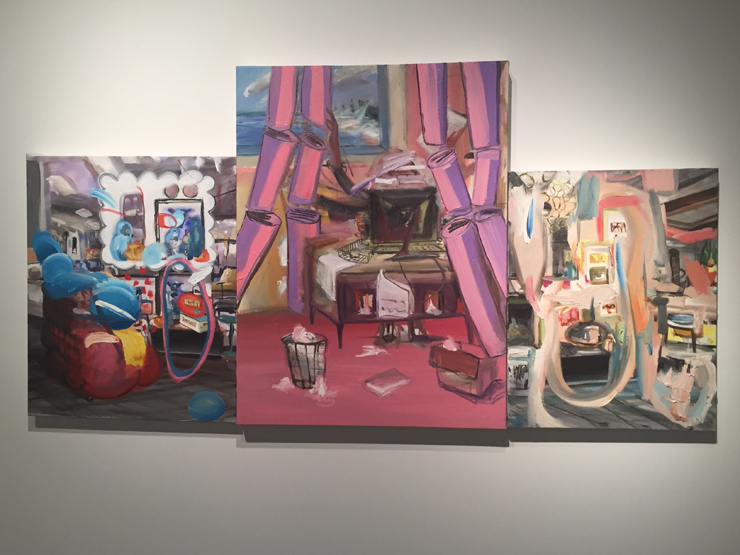
Natalya Laskis, Interior 2 "Overworked," and Interior 3.
The electric box programs "alternative facts" that divert the masses from many "inconvenient truths" like climate change and its major cause, the most inconvenient truth of them all, consumer food choices, such as animal products. People worship drugs, sex, gods, money, fame or other constructs often fueled by the mainstream media. Even some so-called environmentalists, national and local, I won't name any names, refuse to acknowledge the facts.
In her amazing oil on canvas triptych, Natayla Laskis portrays the disorganized interior of an overworked, disorganized person's home, and a window looking out into the water symbolizes a better place far off someplace in nature. Nature may be our escape from the hectic routine of ordinary life ,but can also be a dangerous force that we flee from.
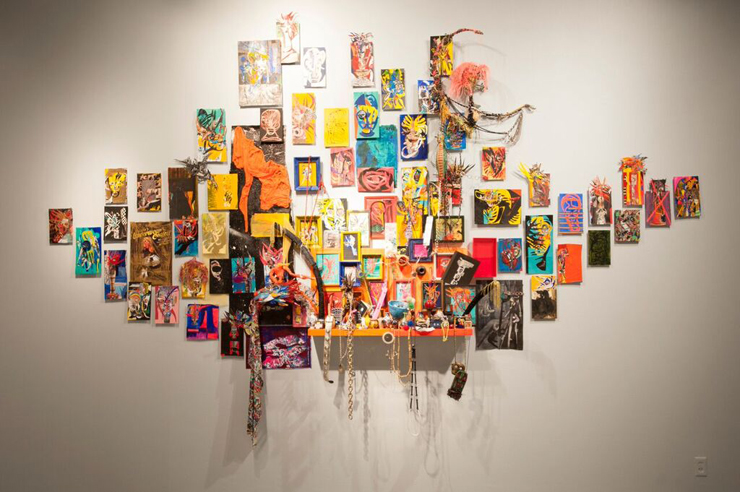
Pepe Mar, Everyday.
Sadly, those affected by climate change and sea level rise will most likely be those with the least resources who live near the water because in this society, when money talks, people listen. Using the medium of photography, Richard LaBarbera depicts images of ordinary folks who dwell near Lake Okeechobee.
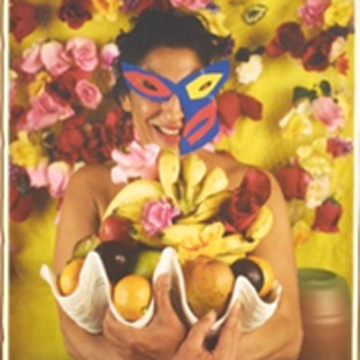
Charo Oquet, The Offering.
Also in the main exhibition room, other artists like Charo Oquet, from the Dominican Republic, and Pepe Mar, from Mexico, displayed their colorful works, which express their cultural background. In Oquet's The Offering, Mother Nature and her fruitful offerings are represented, reminding us that all we need comes from the earth, which has an abundance of nourishment, and if we do not revere her and her creatures through our consumer choices, she will destroy us.
The exhibition is on view through Aug. 6, 2017. The museum is located at 770 NE 125th Street, North Miami, FL 33161. Hours are Tuesday–Friday from 11 a.m.–5 p.m., Saturday 1–9 p.m., and Sunday 11 a.m.–5 p.m. (closed Mondays and major holidays). Admission is $5, and is free to MOCA members and North Miami residents. For more information, visit mocanomi.org or call 305-893-6211.
 MAIN MENU
MAIN MENU

